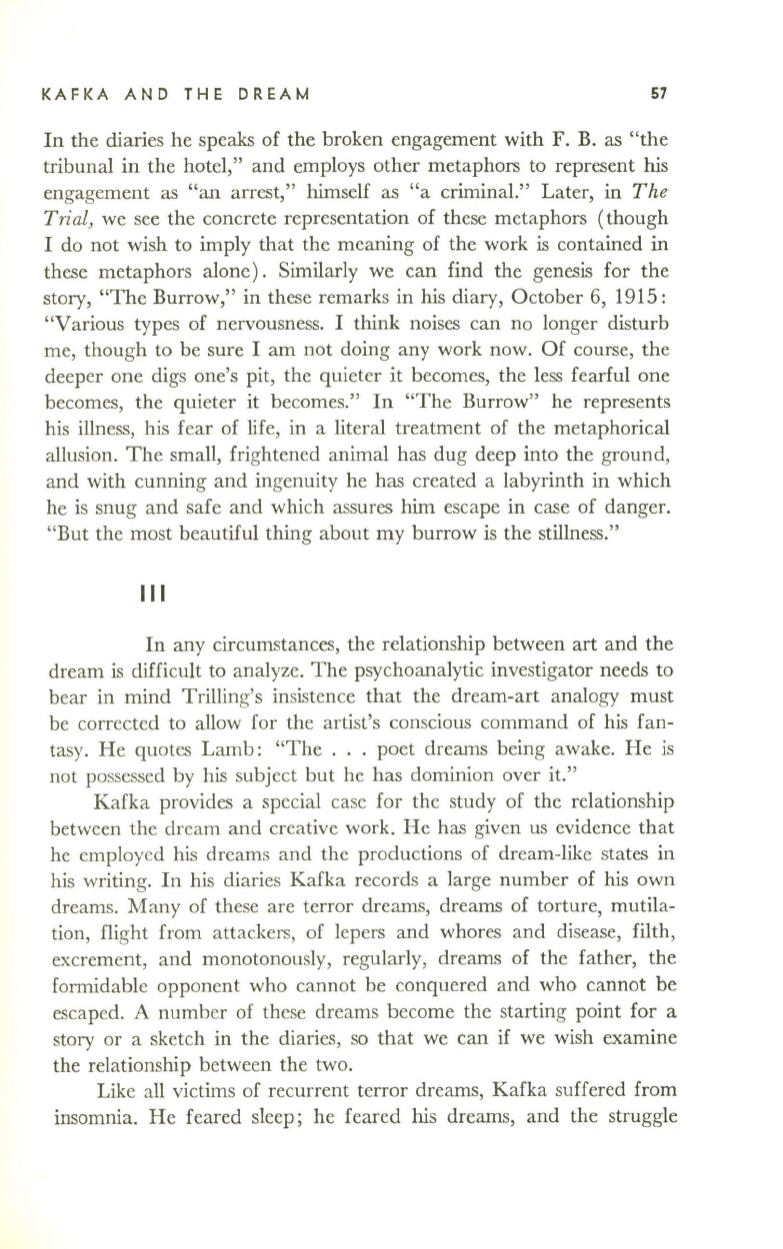
KAFKA AND
THE
DREAM
57
In the diaries he speaks of the broken engagement with F. B. as "the
tribunal in the hotel," and employs other metaphors to represent his
engagement as "an arrest," himself as "a criminal." Later, in
The
Trial,
we see the concrete representation of these metaphors (though
I do not wish to imply that the meaning of the work is contained
in
these metaphors alone). Similarly we can find the genesis for the
story, "The Burrow," in these remarks in his diary, October 6,1915:
"Various types of nervousness. I think noises can no longer disturb
me, though to be sure I am not doing any work now. Of course, the
deeper one digs one's pit, the quieter it becomes, the less fearful one
becomes, the quieter it becomes." In "The Burrow" he represents
his illness, his fear of life, in a literal treatment of the metaphorical
allusion. The small, frightened animal has dug deep into the ground,
and with cunning and ingenuity he has created a labyrinth in which
he is snug and safe and which assures him escape in case of danger.
"But the most beautiful thing about my burrow is the stillness."
III
In any circumstances, the relationship between art and the
dream is difficult to analyze. The psychoanalytic investigator needs to
bear in mind Trilling's insistence that the dream-art analogy must
be corrected to allow for the artist's conscious command of his fan–
tasy. He quotes Lamb : "The ... poet dreams being awake. He is
not possessed by his subject but he has dominion over it."
Kafka provides a special case for the study of the relationship
between the dream and creative work. He has given us evidence that
he employed his dreams and the productions of dream-like states in
his writing. In his diaries Kafka records a large number of his own
dreams. Many of these are terror dreams, dreams of torture, mutila–
tion, flight from attackers, of lepers and whores and disease, filth,
excrement, and monotonously, regularly, dreams of the father, the
formidable opponent who cannot be conquered and who cannot be
escaped. A number of these dreams become the starting point for a
story or a sketch in the diaries, so that we can if we wish examine
the relationship between the two.
Like all victims of recurrent terror dreams, Kafka suffered from
insomnia. He feared sleep; he feared his dreams, and the struggle


